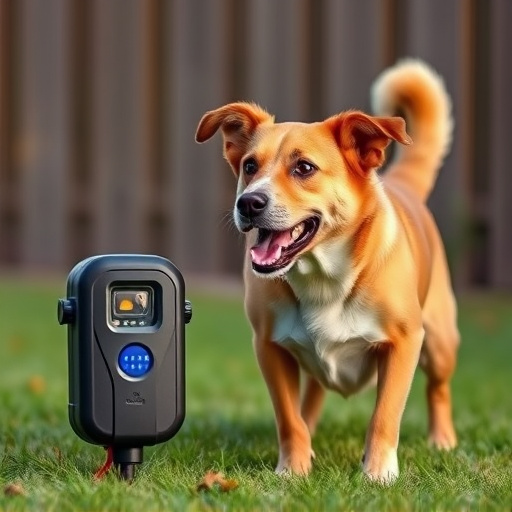Ultrasonic repelents for dog training use high-frequency sound waves to modify behavior, with success varying by breed, age, and sensitivity. To avoid distress, start with low volumes, gradually increasing during training as needed. Consistent, short sessions (incorporating daily routines) are more effective than infrequent, lengthy ones. Regular breaks reduce stress. Adjusting sonic repellent levels incrementally over time is crucial for successful, humane behavior modification.
“Unleash a new training method with Dog Training Ultrasonic Repellent Gear—a revolutionary tool for pet owners. This article delves into the science behind ultrasonic repelents and their effectiveness in modifying canine behavior. We’ll guide you through ‘Adjusting Sonic Repellent Training Levels’ with a step-by-step approach, ensuring successful integration. Learn tips for continuous training to create a harmonious bond with your furry friend. Discover how this innovative technology can transform your dog’s response to unwanted stimuli.”
- Understanding Ultrasonic Repellents and Their Effectiveness
- Adjusting Training Levels: A Step-by-Step Guide
- Tips for Successful Integration and Continuous Training
Understanding Ultrasonic Repellents and Their Effectiveness
Ultrasonic repelents are a popular tool in dog training, emitting high-frequency sound waves that are inaudible to humans but can deter dogs from certain behaviors or areas. The technology is based on the principle that dogs, with their more sensitive hearing, find these ultrasonic tones unpleasant, prompting them to avoid the source of the noise. However, understanding the effectiveness of these devices requires a nuanced approach. While many dog owners report positive results, studies show mixed outcomes, indicating that individual dog responses can vary greatly. Factors like breed, age, and sensitivity play significant roles in determining how well an ultrasonic repellent works for a specific dog.
Adjusting the sonic repellent training levels is crucial to achieving optimal results. Different dogs have different tolerance thresholds for the ultrasonic noise. Starting at lower volumes and gradually increasing as needed allows trainers to gauge a dog’s reaction without causing unnecessary discomfort. Regular breaks during training sessions are essential, providing time for the dog to relax and reducing potential stress or anxiety associated with the repellent. Consistent use and adjustment of training levels will help train dogs to associate certain areas or behaviors with the ultrasonic signal, ultimately leading to more effective behavior modification.
Adjusting Training Levels: A Step-by-Step Guide
When using dog training ultrasonic repellent gear, adjusting the training levels is crucial for effective and humane correction. Begin by setting the device to a low intensity level during the initial stages of training. This allows your dog to become accustomed to the sound without feeling startled or distressed. Gradually increase the intensity level each time your dog exhibits unwanted behavior, ensuring you provide immediate positive reinforcement when they display desired behaviors instead.
For instance, if your dog barks excessively, start with a low-pitched frequency and observe their reaction. If they show no signs of discomfort or distraction, slowly increment the level while monitoring their behavior. As soon as you notice them pausing or looking away from the trigger, reduce the intensity to maintain their attention on positive reinforcement cues. Consistently reinforcing desired behaviors at lower levels promotes a quicker learning process without causing any harm or fear.
Tips for Successful Integration and Continuous Training
When integrating ultrasonic repellent gear for dog training, it’s crucial to start with a gradual approach. Begin by setting low training levels and allowing your dog time to adjust to the subtle sounds. Gradually increase the intensity as they become more familiar, ensuring you monitor their reaction closely. Consistency is key; regular sessions with short durations are more effective than infrequent, lengthy ones. Incorporate these short training bursts into daily routines, such as mealtimes or play, to create positive associations.
Continuous training beyond initial adjustment is essential for long-term success. Dogs require ongoing reinforcement and practice to maintain their response to the ultrasonic signals. Adjusting sonic repellent training levels should be done incrementally, rewarding desired behaviors consistently. Be patient, as every dog learns at its own pace, and avoid overdoing it; excessive use may lead to counterproductive results.
Training a dog with ultrasonic repellent gear requires a thoughtful approach, especially when adjusting training levels. By following the step-by-step guide provided, you can effectively modify the settings based on your dog’s behavior and response. Continuously integrating training sessions and refining these adjustments will ensure successful long-term results in modifying unwanted behaviors. Remember, consistent practice and patience are key to achieving positive outcomes with sonic repellent training levels.
